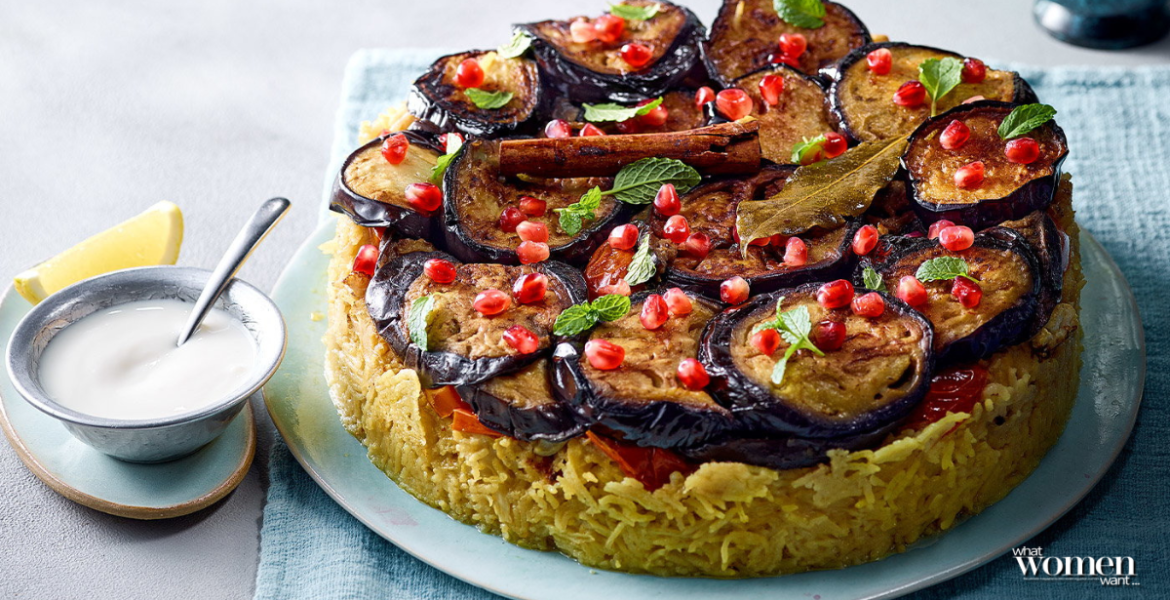Palestinian cuisine is not just a collection of recipes and dishes. It embodies a rich cultural heritage and serves as a cornerstone of Palestinian identity. It reflects centuries of tradition, resilience, and a deep connection to the land. In recent years, the Israeli occupation has been trying to steal the authentic Palestinian cuisine and claimed it as their own. Preserving Palestinian cuisine goes beyond culinary appreciation; it is a matter of safeguarding cultural heritage and identity. As Palestinians continue to face challenges to their cultural existence, it becomes crucial to celebrate and protect their culinary traditions.
The Flavors of Palestinian Cuisine
Palestinian cuisine is characterized by its vibrant flavors, due to the use of fresh, locally-sourced ingredients. Staples include a variety of grains such as bulgur and rice, complemented by an abundance of meat, vegetables and herbs. The cuisine is known for its bold use of spices like sumac, za’atar, and turmeric, which lend distinctive tastes to dishes.
Seasonal eating is central to Palestinian cooking. The dishes are prepared according to what is available locally, ensuring freshness and flavor. This approach not only enhances the taste but also highlights the cuisine’s connection to the land.
The Importance of Palestinian Olive Oil:
One of the most essential ingredients in Palestinian cuisine is olive oil. It is admired for its versatility and health benefits. Palestinians have a deep-rooted relationship with olive trees. They are not only a source of livelihood but also a symbol of resilience and resistance. Palestinians use a lot of olive oil in their cooking, whether for sautéing vegetables, dressing salads, or as a dip for bread. Its rich flavor enhances the authenticity of Palestinian dishes.
The History and Flavors of Maqlouba:
One iconic dish that epitomizes Palestinian cuisine is Maqlouba, which translates to “upside-down” in Arabic. This hearty dish features layers of rice, vegetables such as eggplant, and either chicken, lamb, or beef. They carefully arrange the ingredients in a pot, cooked together until tender, and then flipped upside down when served, presenting a visually striking dish.
Maqlouba embodies the essence of Palestinian hospitality. They often serve it during festive occasions or family gatherings. Its preparation requires patience and skill, reflecting the culinary expertise passed down through generations. Each bite of Maqlouba tells a story of tradition and community, making it a cherished part of Palestinian culinary heritage.
The Palestinian Breakfast:
A quintessential aspect of Palestinian cuisine is breakfast, where dishes like hummus and falafel take center stage. Hummus, a creamy blend of chickpeas, tahini, lemon juice, and garlic, is enjoyed as a spread or dip with freshly baked bread. It exemplifies simplicity and depth of flavor, embodying the resourcefulness of Palestinian cooking.
They usually make their falafel from ground chickpeas or fava beans, herbs, and spices. Then, they deep-fry it to crispy perfection. Then, they wrap in warm pita bread with fresh vegetables and tahini sauce, creating a satisfying and wholesome breakfast or snack. These dishes not only nourish the body but also symbolize community and shared heritage, reinforcing Palestinian cultural identity through food.
By recognizing the significance of Palestinian cuisine and its role in shaping cultural identity, we can uphold the authenticity and integrity of these culinary traditions. Through awareness, appreciation, and support for Palestinian chefs, farmers, and food enthusiasts, we can ensure that Palestinian cuisine continues to thrive and inspire future generations. Let us savor the flavors, honor the history, and stand in solidarity with the Palestinian people in their journey to preserve their culinary heritage.

